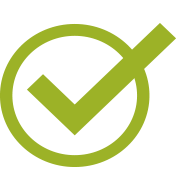Catalog Description
Hours: 99 lecture
Description: Provides the student with a theoretical and practical understanding of the technology and practices used in caring for a patient undergoing a surgical procedure. Additional material covers the structure and function of a healthcare facility specifically the Operating Room. (letter grade only) (not transferable)
Course Student Learning Outcomes
- CSLO #1: Describe and evaluate preoperative patient preparation and considerations for each procedure.
- CSLO #2: Evaluate and assess the differences between human homeostasis and technical interventions.
- CSLO #3: Evaluate and assess the different applications of surgical wound care.
Effective Term
Spring 2025
Course Type
Credit - Degree-applicable
Contact Hours
99
Outside of Class Hours
198
Total Student Learning Hours
297
Course Objectives
- Distinguish between the physiological and psychosocial needs of the patient.
- Describe three practices common to the operative routine.
- Demonstrate knowledge of maintaining homeostasis with selected patient care intervention.
- Identify potential hazards to patients and personnel and list precautions.
- Describe the principles of body mechanics in the transportation and positioning of the patient.
- Discuss the goals of anesthesia and practices to achieve these goals.
- Explain legal terms related to professional liability.
- Identify a governmental agency and explain its role in regulating surgical patient care.
- Identify the benefits of effective documentation for healthcare facilities.
- Demonstrate critical thinking to solve an ethical dilemma.
General Education Information
- Approved College Associate Degree GE Applicability
- CSU GE Applicability (Recommended-requires CSU approval)
- Cal-GETC Applicability (Recommended - Requires External Approval)
- IGETC Applicability (Recommended-requires CSU/UC approval)
Articulation Information
- Not Transferable
Methods of Evaluation
- Classroom Discussions
- Example: After completion of specific chapter, students will be required to post a response to discussion board via LMS and reply to at least one student question. Standard Grading. Example question: Why must a surgical technologist have good organizational skills to become a surgical first assistant? Explain your answer.
- Objective Examinations
- Example: Students will be required to take an objective exam after each unit of study and will achieve at least 70% accuracy. This exam will include definitions of terms related to the unit, application of concepts and ideas that demonstrate comprehension. Students will take examination that includes fill-in blank and matching the correct answers. Standard Grading. Example Questions: Chain of command is: _____________. Answer: An organized hierarchy of personnel positions and authority.
- Problem Solving Examinations
- Example: Students will answer chapter specific critical thinking exercises: Example: Differentiate between the terms morbidity vs. mortality A: Answer critical thinking exercises for section in the textbook on postanesthetic recovery. Example Question: Explain why is a focused assessment of the patient performed following general assessment?
Repeatable
No
Methods of Instruction
- Lecture/Discussion
- Distance Learning
Lecture:
- Instructor PowerPoint presentation on Maintaining homeostasis and selected patient care interventions. Students will discuss what patient care interventions are appropriate to maintain homeostasis following the presentation.
- Instructor PowerPoint presentation on a case study using a scenario of a patient in surgery presenting with various examples of psychosocial and physiological needs.
- Students will then do a case study activity discuss and answer related questions that will require applying skills learned that helps them identify how to respond to the patient's psychosocial and physiological needs.
Distance Learning
- Instructor PowerPoint presentation on Wound Care in the post-operative process. Students will participate in an online discussion on staying within the Surgical Technologists Scope of Work wile assisting with Wound Care. An example: Case Study in the implications of wound care. Students will perform Critical Thinking Exercises and Review Questions for each body system and submit via LMS for grade.
Typical Out of Class Assignments
Reading Assignments
Students are assigned chapters in their texts that corresponds to the lecture for each week over an 16-week semester. Additional handouts supplement the reading on specific subjects such as Power Surgical Instrumentation and Transportation and Positioning the Patient.
Writing, Problem Solving or Performance
Creating a project to identify and explore 250 different surgical instruments per semester. Include photographs, diagrams, or illustrations of each instrument to enhance understanding. Introduce the significance of studying surgical instruments, such as their cultural importance, historical evolution, and their role in surgery. Provide a brief description of each instrument, including its physical characteristics, typical materials used in its construction, and any unique features.
Other (Term projects, research papers, portfolios, etc.)
Students are assigned to a group to discuss an operating room ethical dilemma presented in a written scenario. Following a written format, they are to identify the ethical issues involved, assign the decision to a person in the scenario, and solve the dilemma using ethical and legal principles.
Required Materials
- Surgical Technology for the Surgical Technologist: A Positive Care Approach
- Author: Association of Surgical Technologists
- Publisher: Cengage
- Publication Date: 2025
- Text Edition: 6th
- Classic Textbook?:
- OER Link:
- OER:


